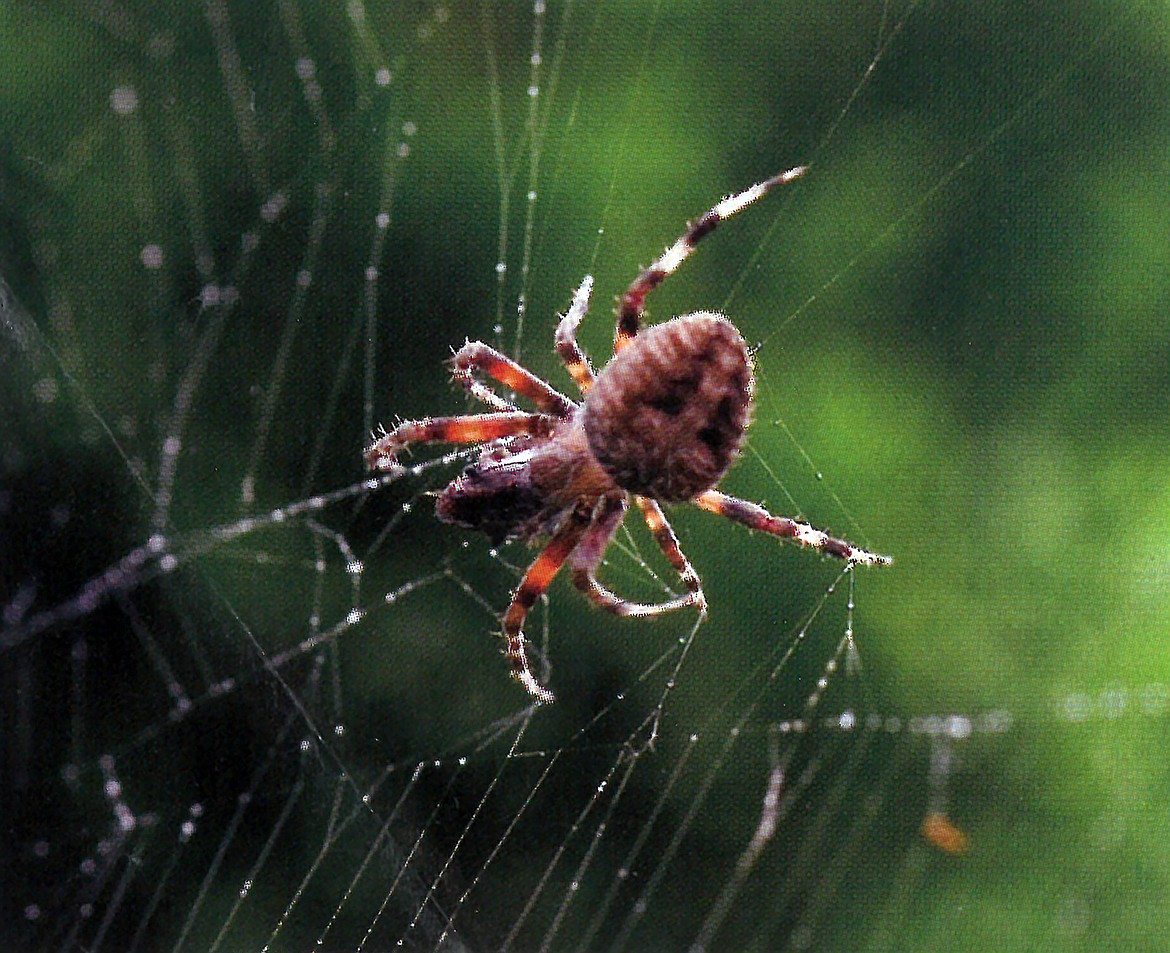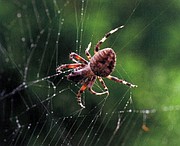Musings on tough critters, heroic spiders, star-lit nights
At some serendipitous point in my many years of bird-feeding, I finally figured out that the sweet and humble Junco — one of our most common finches — didn’t feed at the hanging baskets of sunflower seeds but made do, scavenging the ground underneath them.
After that “duh” moment, I rectified my long-time error and began broadcasting the seeds where I had (finally!) seen the birds congregating — all around the entire deck area and a couple of open but high-brush covered “runs” in and around the wild garden. Since that time I’ve been blessed with a small but friendly (I like to think “loving”) flock of 12 or 15 dark-eyed Juncos — their family moniker since the early 1980s.
Prior to that time, Juncos were termed “Oregon,”” Slate-colored,” and “White-winged” — named as separate species — but since the three species interbred freely in overlapping ranges — providing even more variations, it was decided by the ornithological powers-that-be to consider them all as one species, termed “Dark-eyed Junco”. Since they all share the black head and dark eyes that’s the name agreed on and it certainly makes identification easy! As mentioned before, they are ground-feeders, so if you are blessed with their presence, scatter the black oil sunflower seeds lavishly in welcome.
I’ve often mentioned the lessons provided by my father on the mysteries and miracles of the Great Outdoors as he passed on his knowledge to me — his only child. Girl or not, he gave me the priceless gift of knowing and loving Nature — in all its guises. He imbued me with the understanding that every creature — repugnant to my eyes or not — was created for a reason by the same Divine Hand that fashioned we humans. So one day when I nearly walked into a huge spider web and shrieked in horror — he gave me a lesson in “Arachnid No. 1.”
He explained the web and pointed out the thread that led to it, at the end of which the spider would wait, one leg on the thread to catch the vibration created by a fly or mosquito. His lessons came back to me in college, where during one of my classes I learned that the Argiope species of spider wove a thick zig-zag pattern in the center of their hard-to-see webs so that birds and larger animals could avoid them. I’ve generally never feared spiders and find them interesting, so this past summer when I found a zig-zag web in a bushy section of my wild garden it was almost a déjà vu moment.
Since I learned early that spiders are valuable garden residents , I’ve always welcomed them to mine. Case in point: In the first two years of the Healing Garden, my Rose Garden was sacrosanct and the bushes were to be deadheaded, trimmed where damaged, etc., but never sprayed and any spider webs were to be left alone. I actually had to stop a woman from wiping away a web with a Kleenex when her little girl started crying in fear of the spider on it. I’m glad I was there to chat with them about the good things spiders did, and told them how my daddy taught me about them. I don’t know if they were convinced but I felt I had scored One for the environment.
If you can handle it next season, try to give your hard-working spiders a break — don’t use pesticides (you shouldn’t anyway) — the spiders and other large insects serve as natural pest predators. I was lucky to run across the featured picture of what was once a common outdoor spider in our area, but becoming more rare, possibly due to colder winters. By the way, those big disconcertingly quick house spiders do a lot of good if you can overcome the shock of their presence. I was reading on my sofa the other day, looked down, and right beside me, like a best friend, sat an enormous house spider — (I told my daughters it was so big I thought it was company) — and I admit I was a bit leery, so I gently gathered it in a (large) bunch of Kleenex, carried it to my back-door entrance to the woodshed and tossed it out there to find shelter in the stacks. Discretion has always been the better part of Valle. (Sorry about that).
On now to something beautiful and exciting: December has some magnificent “skyrotechnics” (my word) in store for us this year. A manifestation that happens only every 20 years will take place on the 16th and 17th, and the 20th and the 22nd. On the first dates, the Moon will be close to the giant planets of Jupiter and Saturn for a glowing three-part light show; then Jupiter passes extremely close to Saturn coming closest on the Solstice — Dec.21 — and the planets appear so close in the sky they seem to be one giant star. I recall the last time this happened it seemed I was looking cross-eyed at the two-planet half-merge. Visible with the naked eye, a telescope would enhance this rare event. The Old Farmer’s Almanac “Sky Watch” says to look for them 45 minutes after local sunset during evening twilight just above the southwestern horizon. This conjunction is truly a rare and majestic event — so let’s hope for clear skies.
Valle Novak writes the Country Chef and Weekend Gardener columns for the Daily Bee. She can be reached at bcdailybee@bonnercountydailybee.com. or by phone at 208-265-4688 between the hours of 8 a.m. to 7 p.m.





